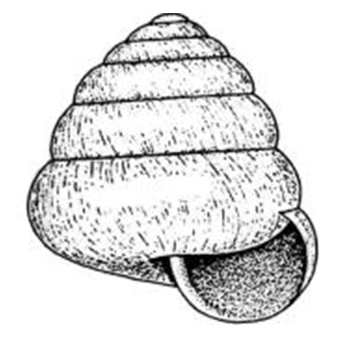Nutrition:
Like many gastropods, Euconulus fuvlus (Müller 1774)
are herbivores. What exactly does being an herbivore
entail? Being herbivores means a large if not all of their diets are
composed of organic materials that are most prevalent and readily available
in their habitats. For Euconulus fulvus
(Müller 1774) who are
generalist eaters, meaning they will consume a large variety of foods, the
vast major of their diets are made up of dead or aging leaves, decomposing
of fallen fruit, flowers, different types of mosses, lichens, algae and even
some grasses. Along with all of these plant type materials it is also
very common for snails to regularly consume different types of soils. Yet,
in other species of gastropods fungi, animal tissue and even some small
animal remains have been found in their feces. In review, the majority
of a snails diet is composed of plant like materials followed by fungi and
animals respectively (Speiser, 2001) .
.
However, the diets of many gastropods are dependent on a variety of uncontrollable environment factors. The first factor is the accessibility of food that is within crawling distance. Secondly, deals with the habitat they live in and what different food types are able to available and able to survive in the specific living conditions of the habitat. In addition not every species of snail with eat exactly the same foods because of the many different habitats that snails live in. Finally, can the nutritional needs that the snails require be met in the habitat they live with the food types available. One specific example is the role calcium plays in land snails and slugs lives (Baker, 2001; Speiser, 2001).
Calcium has a variety of different roles in a snail or slugs life, it
is used in the construction of their shell if present, fluid regulation,
cell wall function and in reproduction. Snails obtain calcium in a magnitude
of which include rasping on other animals bones and carcasses, eating
decaying plant material, rocks and even from other snails shells. In
addition to rasping on these various materials, snails are also able to
obtain calcium from some of the soils they consume in their diets
(Kado,
1960)
Now that you found out where Euconulus fulvus (Müller 1774) live, check out how this snail produces offspring on the Reproduction page.